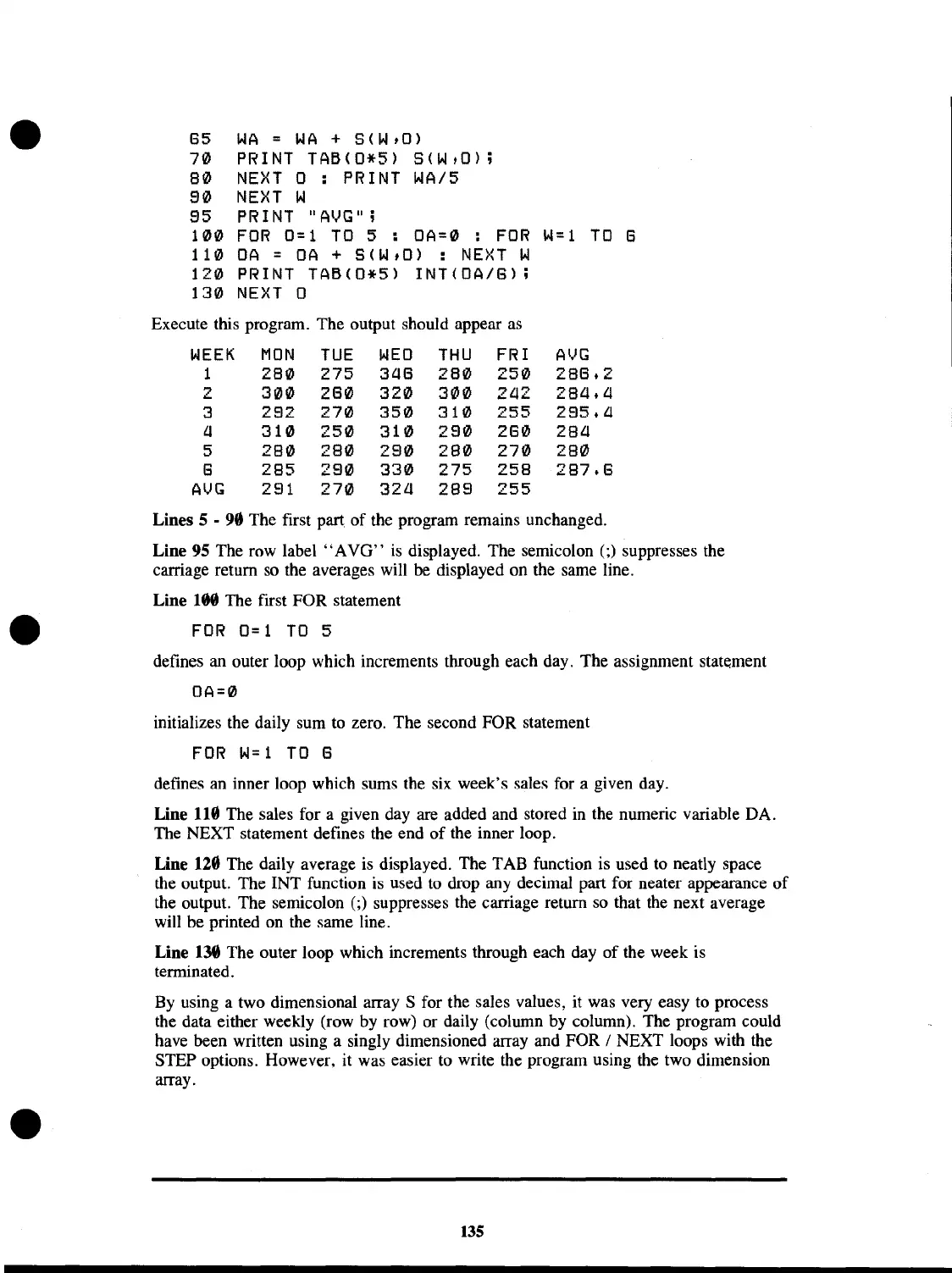65
WA
=
WA
+
8(WtO)
70
PRINT
TAB(0*5)
8(WtO);
80
NEXT
0
.
PRINT WAf5
.
80
NEXT
14
85
PRINT
II
AI)G"
;
100
FOR
0=1
TO
5
.
OA=0
.
FOR
14=1
TO
6
.
.
110
OA
=
OA
+
5(14.0)
:
NEXT
14
120
PRINT
TAB(0*5)
INT(OAf6)
j
130
NEXT
0
Execute this program. The output should appear
as
WEEK
MON
TUE
WED
THU
FRI
AI)G
1
280
275
3a6
280 250
286.2
2
300
260
320
300
2a2
28a.a
3
282 270
350 310
255
285.a
a
310
250
310
280
260
28a
5
280
280
280 280 270
280
6
285
280
330
275 258
287.8
AVG
281
270
3211
288
255
Lines 5 - 98 The first part of the program remains unchanged.
Line 95 The row
label"
AVG"
is
displayed. The semicolon
(;)
suppresses the
carriage return
so
the averages will be displayed on the same line.
Line
lee
The first FOR statement
FOR
0=1
TO
5
defines an outer loop which increments through each day. The assignment state.ment
OA=0
initializes the daily sum
to
zero. The second FOR statement
FOR
14=1
TO
8
defines
an
inner loop which sums the six week's sales for a given day.
Line
118 The sales for a given day are added and stored in the numeric variable DA.
The NEXT statement defines the end
of
the inner loop.
Line
128 The daily average is displayed. The TAB function is used
to
neatly space
the output. The INT function is used
to
drop any decimal part for neater appearance
of
the output. The semicolon
(;)
suppresses the carriage return
so
that
the
next average
will be printed on the same line.
Line
138 The outer loop which increments through each day of the week is
terminated.
By
using a two dimensional array S for the sales values, it was very easy
to
process
the data either weekly (row by row) or daily (column by column). The program could
have been written using a singly dimensioned array and FOR
I NEXT loops with the
STEP options. However, it was easier
to
write the program using the two dimension
array.
135

